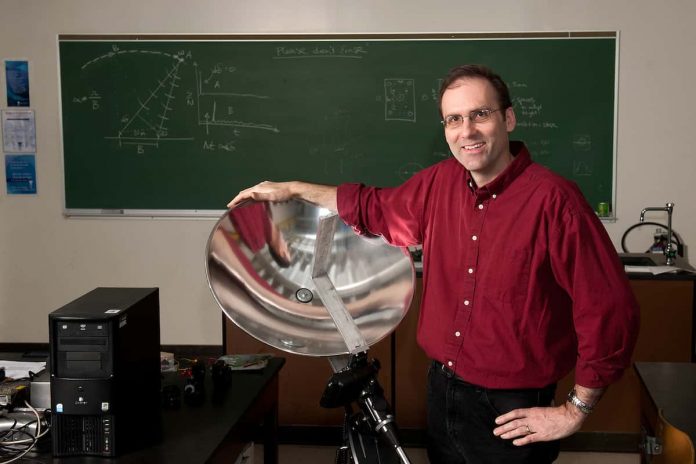Physics Professor and CSU Professor Elliott Horch is part of a team of scientists who have used the 8.1-meter Gemini South telescope in Chile to obtain images of the star R136a1, the most massive known star in the universe. The Gemini South telescope is at the International Gemini Observatory, operated by the National Science Foundation’s NOIRLab, the preeminent U.S. national center for ground-based, nighttime optical and infrared astronomy.
The scientists’ research, reported in a news brief on the NOIRLab website, is led by NOIRLab astronomer Venu M. Kalari. According to the website, the outcome of their work “challenges our understanding of the most massive stars and suggests that they may not be as massive as previously thought.” The research was presented in the paper “Resolving the core of R136 in the optical” to appear in The Astrophysical Journal. Read “Sharpest Image Ever of Universe’s Most Massive Known Star” (August 18, 2022).
Horch earned a Ph.D. in applied physics from Stanford University in 1994. His research interests are in astrophysics, binary stars, exoplanets, high-resolution imaging, and astronomical instrument building. He regularly collaborates with scientists from around the globe.
He developed the Differential Speckle Survey Instrument (DSSI) and the SCSU Interferometer and described the DSSI as being like “putting eyeglasses on a telescope.”
Horch earned the CSU System Research Award in 2011 and was the recipient of the 2012 SCSU Faculty Scholar Award and the 2020 J. Philip Smith Outstanding Teaching Award. Also in 2020, he was named a CSU Professor.


